Bacterial deodorant: a symbiotic relationship between tree frogs and Pseudomonas bacteria

A river begins with a blue brook, but friendship begins with mutually beneficial symbiotic relations between two biological entities. In harsh conditions of the wild, when half of its inhabitants want to eat you, smiles rarely help. But what exactly helps is the aforementioned symbiosis - mutually beneficial cooperation between individuals of different species. Each of the participants in such a relationship receives something of its own: protection, food, a house, a vehicle, etc. But here are tree frogs of the species Boana prasinasymbiosis with certain bacteria is needed for love affairs. Today we will get acquainted with the amazing observations of scientists who found that the bacteria that live on the skin of frogs contribute to the release of a fragrance that is unique to individual sexes, which plays an important role in finding a partner and, accordingly, in reproduction. Why did scientists sniff frogs, what do they smell like (frogs, not scientists), and how did such an unusual symbiosis arise between amphibians and bacteria? Answers await us in a study group report. Go.
About friendship in nature
For a person, the benefit of friendship is usually psychological (emotional) in nature. We meet new people, begin to make friends and communicate because we simply enjoy it. The same can be said about our pets. Cats, dogs, hamsters, fish, etc. they are friends for a person and more likely moral than physical support. Although there are people living on the principle of a mother from the movie "Prostokvashino":
- Well, you yourself think, what is the use of this cat?But back to the flora and fauna. In the wild (we will not consider symbiosis under controlled conditions), relations between representatives of different species are necessary for survival or for a more comfortable life.
“Well, why is it necessarily good?” What, for example, is the use of this painting on the wall?
- This picture on the wall is very useful - it blocks a hole in the wallpaper!
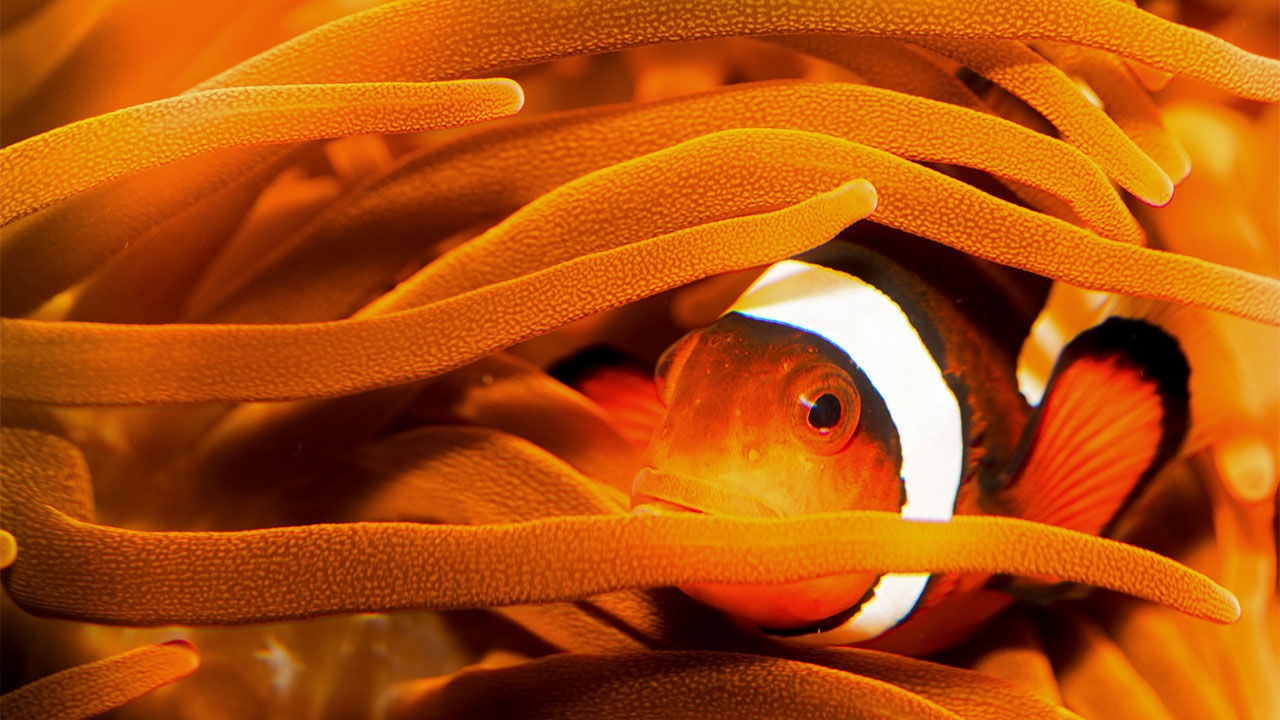
Clown fish in anemone.
A striking and one of the most famous examples are clown fish and sea anemones (sea anemones). Fishes, at the sight of which many exclaim something like "Oh, Nemo!", Living inside the anemone, are immune to their knidocytes (stinging / stinging cells), but predators are very susceptible. In other words, clown fish live in a house with an electric fence. Sea anemones also benefit from such a neighborhood in the form of nutrients from fish waste products (yes, the phrase "de *** new relations" for sea anemones sounds quite literally).
Another unusual symbiosis, some species of anemone form with hermit crabs.
From the depths of the sea we move to a flowering meadow. Who do we always represent next to a flower? Of course bees. These workaholics collect nectar from flowers, that is, they receive food. At the same time, flying from flower to flower, they carry out so-called indirect pollination, which helps plants in reproduction. In other words, the question “did you hold a candle?” The bee would answer in the affirmative, and then would sting you for such inappropriate questions.
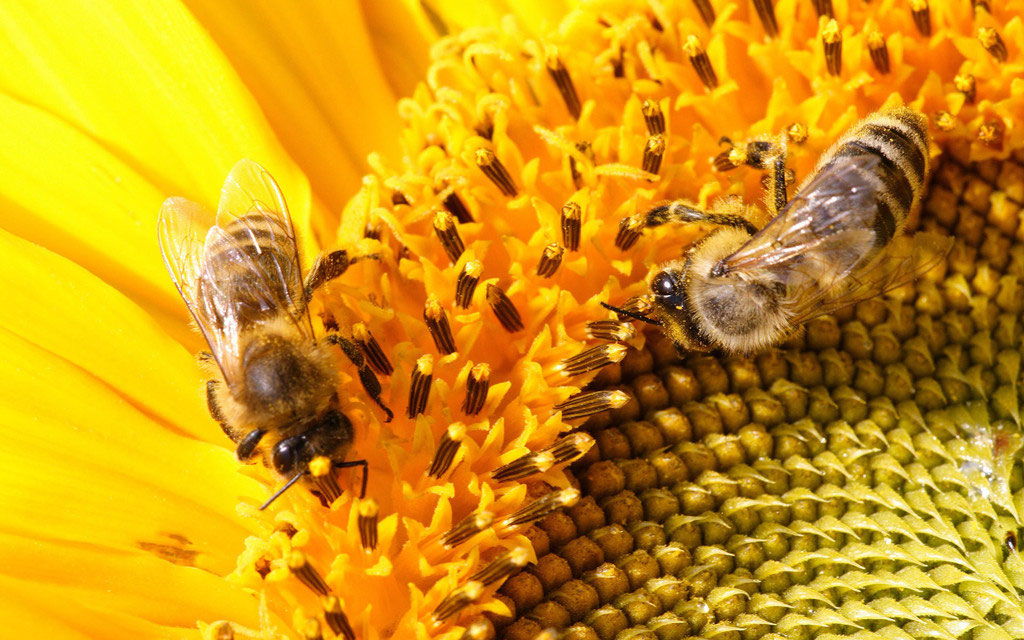
Bees on a sunflower.
In addition to bees, other types of insects (ants, bumblebees, butterflies, etc.), as well as vertebrates (birds, bats, rodents, etc.) help the plants in the pollination process.
As we have already understood, symbiotic relationships are not uncommon. We are rather surprised by the participants in these relations, rather than the fact of their existence.
It is worth noting that smell is a chemical signal that allows you to get certain information about its source. Not only frogs, but also many species of vertebrates use smells as a way to exchange information. Remember what cats do (especially often in the spring) - in this way they notify other representatives of their species about their presence, right to territory, etc. If we consider the sources of odors in general, then there are several main sources:
- primary (de novo) secretory synthesis in certain glands;
- by-products of excretion, that is, secretions of the body's vital activity;
- use of the environment;
- metabolic products of symbiotic bacteria.
Back in the 70s of the last century, a "theory of fermentation" was stated, which stated that symbiotic bacteria in mammals metabolize proteins and lipids found in aromatic glands. Consequently, volatile compounds are produced which the carrier uses for communication.
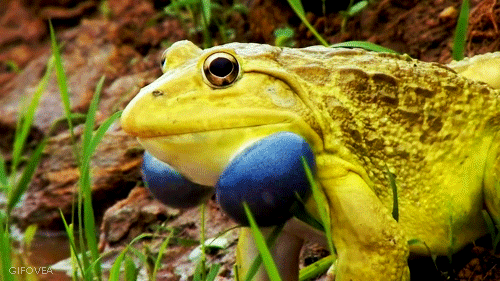
A croaking tiger frog.
If we talk about frogs and toads, then here the main method of transmitting information (i.e. communication) was always considered sounds (acoustic signals). But the smells were not given much attention, considering them not so important in this process. It turned out that this is all different. Not only is the smell very important in transmitting information (sex determination, attracting a partner, protection from predators, etc.), it also arises with the help of symbiotic organisms, namely bacteria.
Scientists managed to find out that the secret secreted by the skin of frogs contains organic sulfides * , sesquiterpenes * and methoxypyrazines * . The source of these chemical compounds was bacteria from the Pseudomonas group that live on the skin of the studied individuals.
Organic sulfides * - sulfur-containing analogues of ethers.As I mentioned earlier, scientists chose tree frogs of the Boana prasina species living in the South American region as subjects . This species has a rather long reproductive period, during which males use acoustic signals and emit a very strong and characteristic smell. Scientists emphasize that studies of the role of odors in the social activity of tree frogs have already been conducted, but the source of these odors has not yet been investigated.
Sesquiterpenes * - a group of organic compounds from the class of terpenes, which include hydrocarbons from C 15 H 24 to C 15 H 32 .
Methoxypyrazines * are chemical compounds that produce odors.
And now, having become acquainted with the concept of symbiosis, research participants and the goals of scientists, we will begin to familiarize ourselves with the results of observations.
Research results
Using TFME (solid-phase microextraction) and GC / MS (gas chromatography / mass spectrometry), scientists were able to establish that the composition of the volatile secretion of the skin of males and females of the species B. prasina includes about 60-80 different chemical compounds, including alcohols, aldehydes , alkenes, esters, ketones, methoxypyrazines, terpenes (hemiterpenes, monoterpenes and sesquiterpenes) and thioethers.
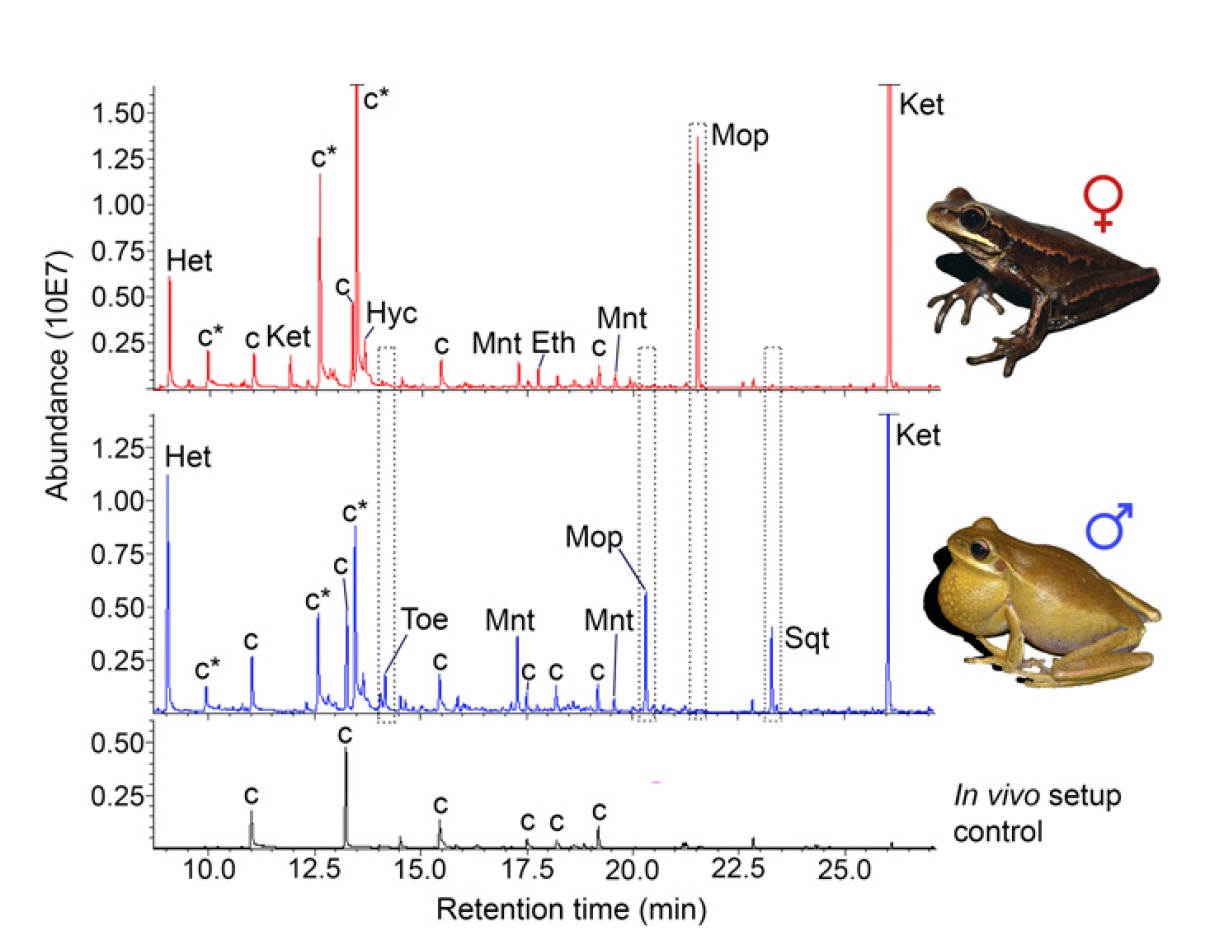
Image No. 1: Comparison of the chemical composition of the volatile secretion of the skin of males and females of B. prasina.
Designations to the chart above: Mop - methoxypyrazines; Het - hemiterpenes; Mnt are monoterpenic; Sqt - sesquiterpenes; Hyc - hydrocarbons; Toe - thioethers; Eth- ethers; Ket - ketones; c * - aromatic compounds also found in terrariums.

Table No. 1: data from a chemical analysis of the volatile secretion of the skin of males and females of B. prasina species.
At the same time, it turned out that the majority of all this “fragrant soup” for both sexes is hemiterpenes, ketones and alcohols (49.9–78.3%).
If we compare the chemical composition to determine its differences in males and females, then SQT (sesquiterpenes), TOE (thioesters) and MOP (methoxypyrazines) are distinguished, which can be seen from 2A and 2B .
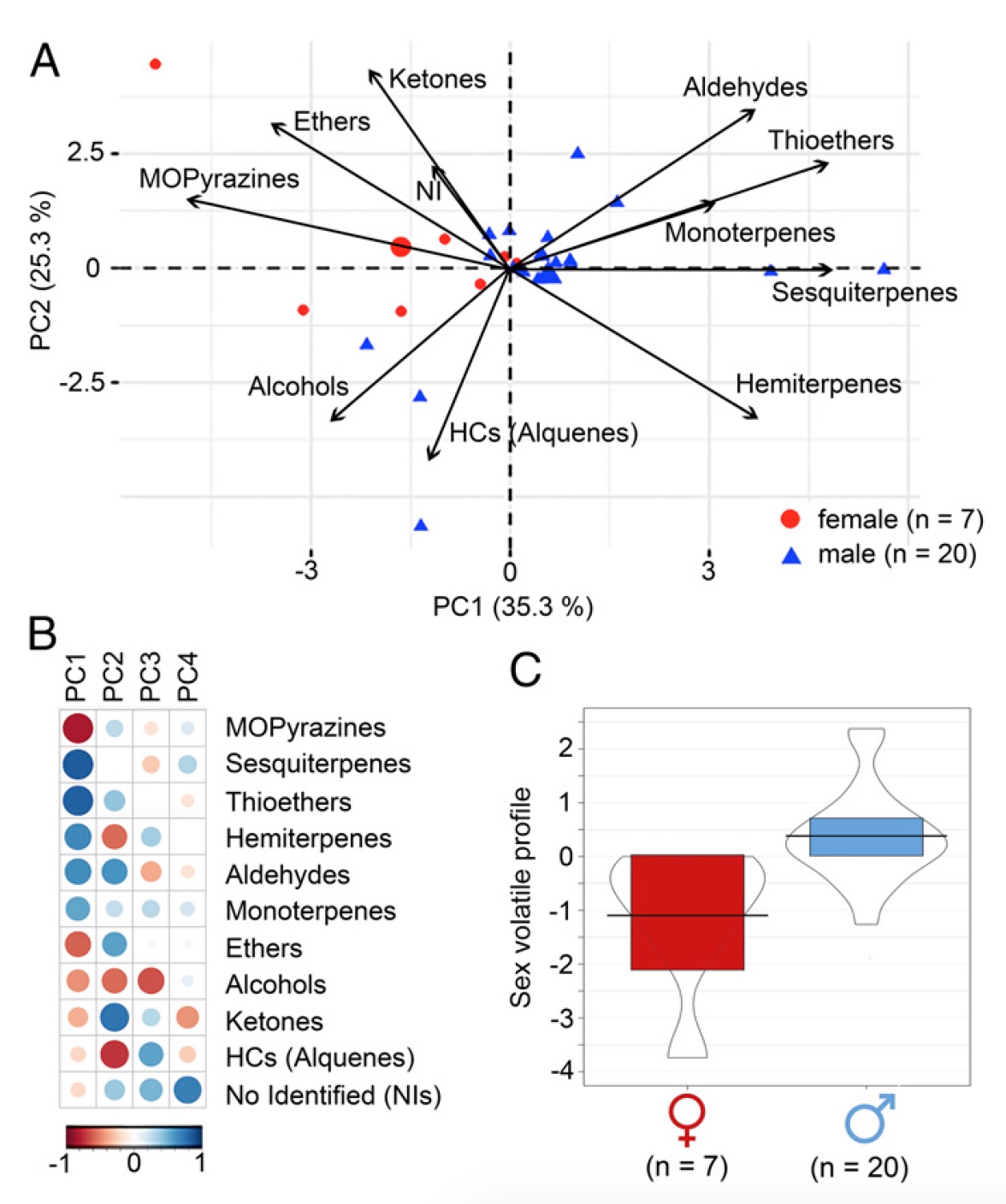
Image No. 2: a comparative analysis of the chemical composition of the secretion of males and females.
Dual Schedule 2Abuilt by the relative content of volatile compounds. The sample dispersion centroids are depicted as a circle for females and a triangle for males. Figure 2B shows the relative contribution of each class of chemical compounds to the first four main components obtained in PCA analysis (principal component method). The size of the circle indicates the absolute value of the contribution, and the color (from red to blue) indicates the negative or positive contribution.
Thanks to the creation of the LDA function (linear discriminant analysis), it became clear to scientists that it is possible to distinguish the sex of an individual by means of a chemical profile ( 2C ): Kruskal-Wallis test: DF = 1, P = 0.001.
A small explanation of the terminology in the data:
- the word “interaction” means that in the analysis of the data both factors were taken into account - the gender of the individual and the method of sampling;
- the word "gender" means the analysis of data solely for determining sex under certain conditions of sampling;
- in vivo - analysis on a living organism (not on a sample taken from it);
- sample - analysis of skin samples taken from a living individual (analyzed separately from the individual itself).
Of the three most distinctive classes (TOE, SQT, and MOP), it is MOPs (methoxypyrazines) that were more pronounced in females than in males. This is evident from the likelihood ratio test. Interaction: χ 2 1 = 1.20; P = 0.2729; gender: χ 2 1 = 12.778; P = 0.0004.
Moreover, in males SQT (sesquiterpenes) were higher than in females. Interaction: χ 2 1 = 23.817; P <0.0001; gender (in vivo): χ 2 1 = 22.933; P <0.0001; gender (sample): χ 2 1 = 1.317; P = 0.2511.
Finally, the analysis of TOE data (thioesters) showed that males have more of this chemical compound, but only when analyzed on a living individual (in vivo). Interaction: χ2 1 = 10.618; P = 0.0011; gender (in vivo): χ 2 1 = 10.9505; P = 0.0009; gender (sample): χ 2 1 = 2,0051; P = 0.1568.
Upon a more detailed examination of the composition of SQT and TOE, scientists identified two main substances that were most expressed, namely dihydroedulan II in SQT and C 6 H 12 S in TOE.
Further, the researchers decided to deal with methoxypyrazines (MOP) in more detail, of which 4 were isolated:
- MOP1 - 2-isopropyl-3-methoxypyrazine (C 8 H 12 N 2 O)
- MOP2 - 3-isopropyl-2-methoxy-5-methylpyrazine (C 9 H 14 N 2 O)
- MOP3 - 2-sec-butyl-3-methoxypyrazine (C 9 H 14 N 2 O)
- MOP4 - 3-sec-butyl-2-methoxy-5-methylpyrazine (C 10 H 16 N 2 O)
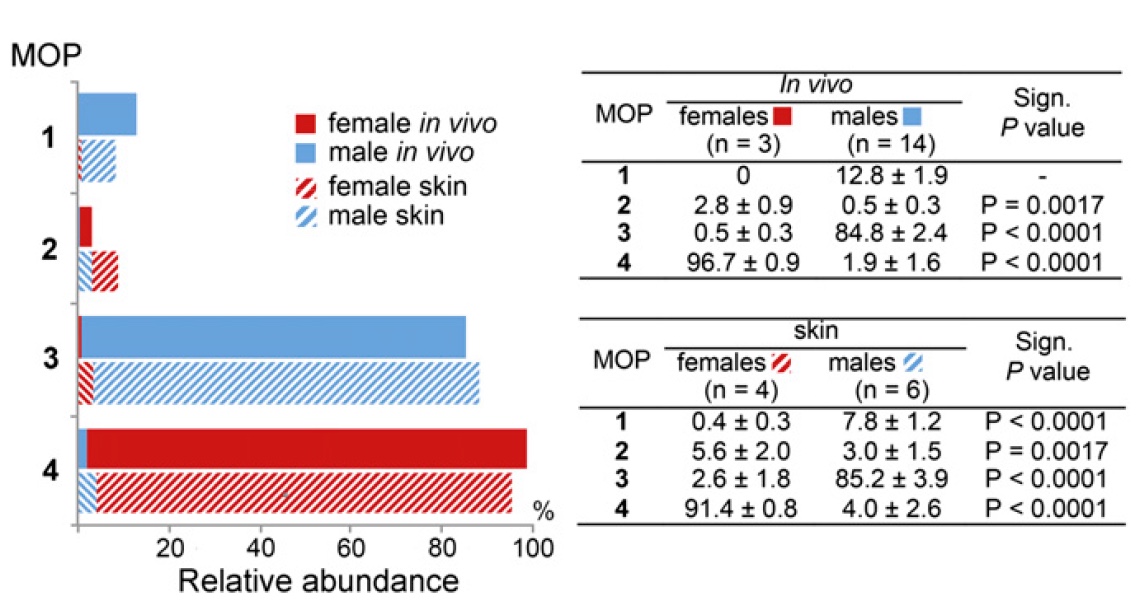
Image 3: data for all four types of MPAs in males and females.
As can be seen from the analysis data, MOR3 is very pronounced in males, but not in females, regardless of the analysis method (interaction: χ 2 1 = 0.1219; P = 0.727; gender: χ 2 1 = 49.4548; P <0 , 0001).
But MOR4, on the contrary, is strongly pronounced in females and not in males (interaction χ 2 1 = 5.3977; P = 0.0202; gender (in vivo): χ 2 1 = 25.5523; P <0.0001; gender (sample): χ 2 1 = 33.1275; P <0.0001).
MOP1 and MOP2 were rather poorly represented in both sexes and together accounted for approximately 0-12.8% of the total number of methoxypyrazines.
We figured out the data, numbers, comparisons of "who has more", and now to the most interesting.
The fact is that TOE and MOP are chemical compounds that are produced (usually) by microorganisms. Therefore, scientists had to check if this is the case with tree frogs. Samples were taken from which bacteria associated with the skin were isolated, cultured and identified.
From, attention, 128 volatile metabolites in bacteria, scientists identified 16, which were also in frogs. And also 5 compounds that were found only in bacteria were identified.
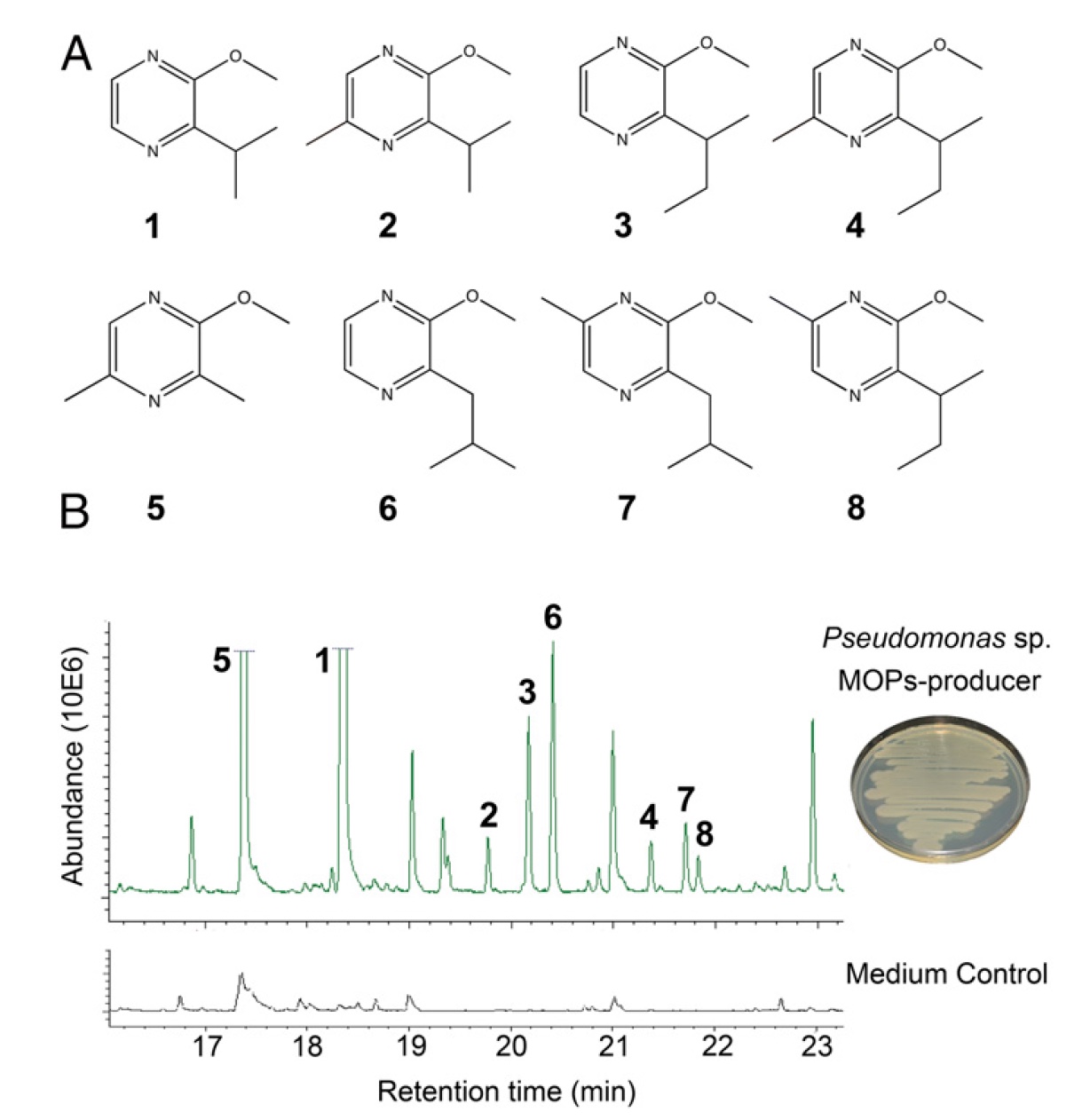
Image No. 4: 4A - MPA found in the skin of frogs (1-4) and in the bacteria Pseudomonas (5-8), 4B- GC / MS chromatogram of the total ion current, showing the production of MPA 1-8 (left) by the bacterium Pseudomonas, cultured in Muller – Hinton agar (right).
And here is another very interesting fact - all 4 types of MPAs (we examined them earlier) were produced by one single bacterial isolate. In addition to those present in MPA 1-4 frogs, the bacterium produced several additional ones (5-8 in image 4A ), which were not detected in frogs. It is also worth noting that in bacteria, the most "massive" MPA was number 5 (C 7 H 10 N 2 O or 2-methoxy-3,5-dimethylpyrazine), accounting for approximately 82.4 ± 16.7% of the total number of methoxypyrazines.
A comparison of MOP1-4 in bacteria and frogs showed that MOP2 is better expressed in bacteria (5.9 ± 6.9%), but MOP3 and MOP4 are worse than in frogs (2.6 ± 5.0% and 2 , 7 ± 2.1%, respectively).
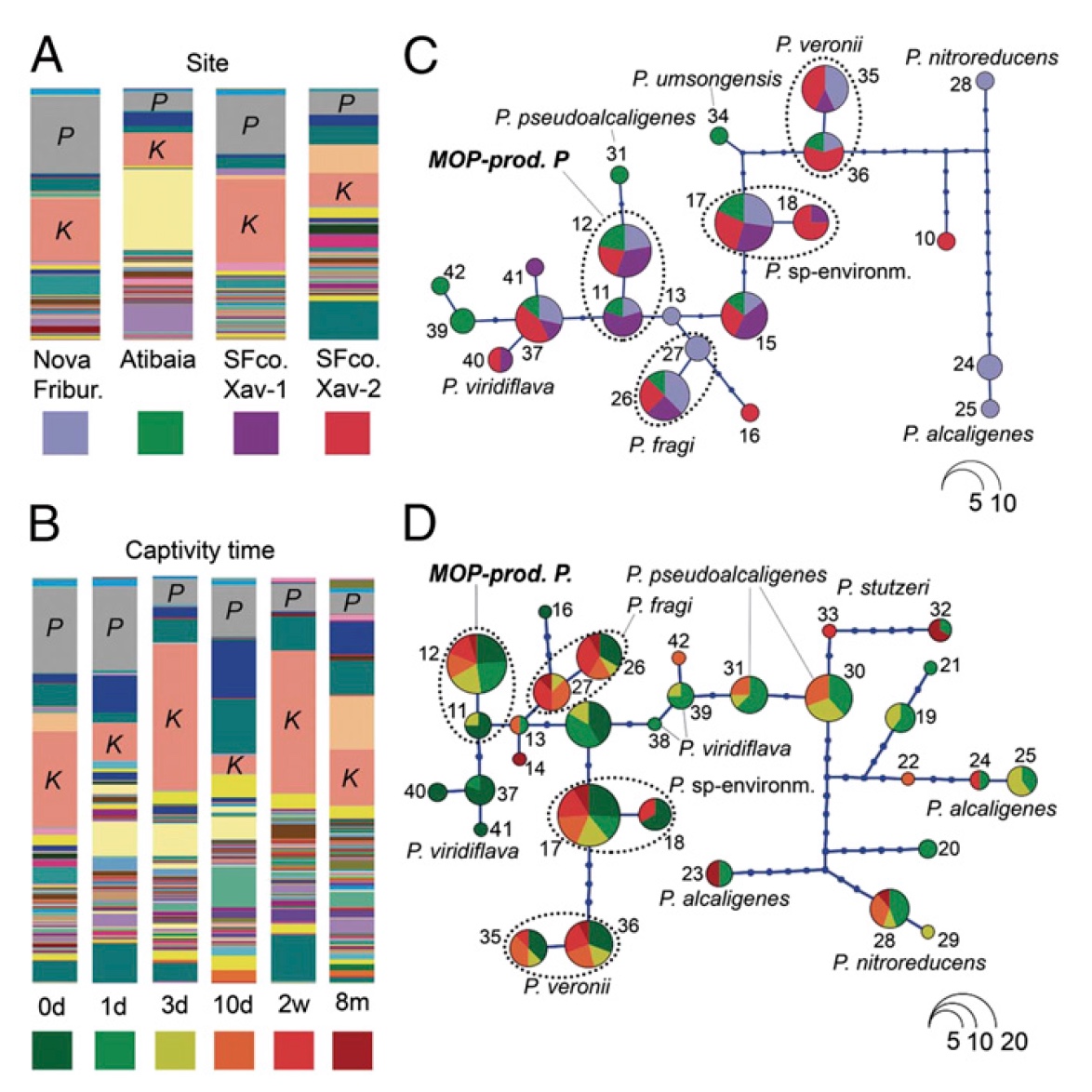
Image No. 5: a population of bacteria on the skin of test subjects taken from different regions and at different times.
The individuals for the study were taken from the wild, more precisely from 4 different regions ( 5A ). The number of bacteria differed in individuals from different regions and depended on the time spent in captivity ( 5B ).
Despite variations in more than half the number of active taxonomic units (OTUs) observed in skin bacteria colonies in four sites (60–63%) and in five different sampling periods (56–66%), they can be identified as representatives of the following bacterial families: Enterobacteriales , Pseudomonadales , Methylophilales , Oceanospirillales , Actinomycetales , Bacillales , Alteromonadales and Burkholderiales . The most pronounced among this variety were Klebsiella ( Enterobacteriales ) and Pseudomonas ( Pseudomonadales) This is shown in graphs 5A and 5B .
No particular differences were found between the tested individuals from different regions. But the influence of time in captivity was palpable. Thus, the diversity of bacteria and their numbers decreased over time (in captivity): 1st day - 163 ± 26, 3rd: 145 ± 35, 10th: 100 ± 9, 2 weeks: 104 ± 41 and 8 months : 155 ± 34.
The difference, depending on the region of residence and time in captivity, was also visible among the bacteria Pseudomonas . Some OTUs were found only in frogs from a certain region ( 5C ) or were already in captivity ( 5D) But 4 species of bacteria from this genus were still found in most samples, that is, they did not depend on geographical factors and time in a controlled laboratory environment. At the same time, there was a difference in the number of Pseudomonas bacteria in males (on average 1.7%) and females (on average 2.4%). These indicators decreased during their stay in captivity in both sexes, especially in the first 3 days: from the maximum on the first day of 8.8 ± 4.3% to the maximum on the 3rd - 0.4 ± 0.2%.
Given the analyzed data, it can be concluded that it is the Pseudomonas bacteria that are actively involved in the secretion of volatile compounds that are used by the carrier, i.e. frogs, to determine sex, attract a partner during the breeding season and as a protection against predators.
For a more detailed acquaintance with the nuances of the study, I recommend that you look into the report of the research group and additional materials to it.
Epilogue
The fact that odors play an extremely important role in the life of many living organisms, including amphibians, has been known for quite some time. However, such studies, the purpose of which is to identify the primary source of these odors and mechanisms for the production of volatile chemical compounds, have not yet been conducted.
Scientists were able to find out exactly which chemical compounds are important for the formation of odors and what produces them. The skin of tree frogs is home to a number of bacteria from different families. Scientists suggest that biomolecules synthesized by amphibian skin serve as a filter through which unique combinations of different types of bacteria can dwell on the skin. A volatile compounds secreted by MOP-produced bacteria Pseudomonasin the skin, frogs can act as infochemicals, that is, a way of communication between the bacteria themselves.
In turn, tree frogs use this as one of the types of signals given to other individuals during the mating season along with acoustic signals, which is confirmed by behavioral tests in the wild and in laboratory conditions.
In the future, researchers are going to continue their work in order to study in more detail the interaction of bacteria and tree frogs. Scientists call this work the first steps in understanding the symbiotic relationship between amphibians (and not only) and various microorganisms.
Yes, such studies may not have any practical benefit for humanity, although it is too early to talk about it, because one discovery can lead to a series of new ones that somehow can and will affect our lives. But what exactly these studies provide is the knowledge and understanding of the aspects of the world around us, about which we still do not know everything.
Friday off-top:
Who said that frogs do not fly (well, more precisely, gracefully fall)?
Voice-over - David Attenborough.
Thank you for your attention, stay curious and have a great weekend everyone, guys!
Who said that frogs do not fly (well, more precisely, gracefully fall)?
Voice-over - David Attenborough.
Thank you for your attention, stay curious and have a great weekend everyone, guys!
Thank you for staying with us. Do you like our articles? Want to see more interesting materials? Support us by placing an order or recommending it to your friends, a 30% discount for Habr users on a unique analogue of entry-level servers that we invented for you: The whole truth about VPS (KVM) E5-2650 v4 (6 Cores) 10GB DDR4 240GB SSD 1Gbps from $ 20 or how to divide the server? (options are available with RAID1 and RAID10, up to 24 cores and up to 40GB DDR4).
VPS (KVM) E5-2650 v4 (6 Cores) 10GB DDR4 240GB SSD 1Gbps until the summer for free when paying for a period of six months, you can order here .
Dell R730xd 2 times cheaper? Only we have 2 x Intel Dodeca-Core Xeon E5-2650v4 128GB DDR4 6x480GB SSD 1Gbps 100 TV from $ 249in the Netherlands and the USA! Read about How to Build Infrastructure Bldg. class using Dell R730xd E5-2650 v4 servers costing 9,000 euros for a penny?
